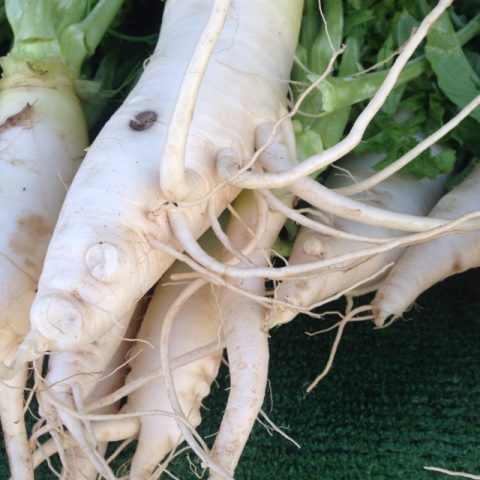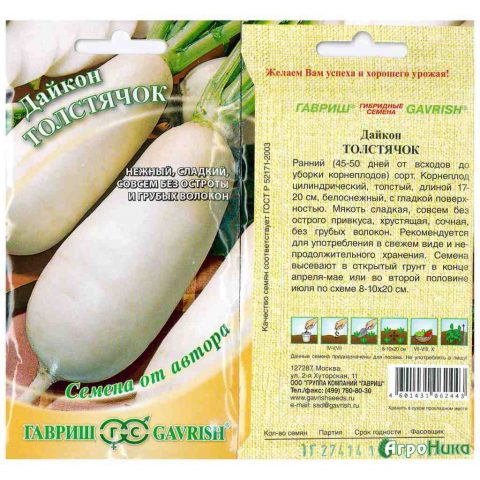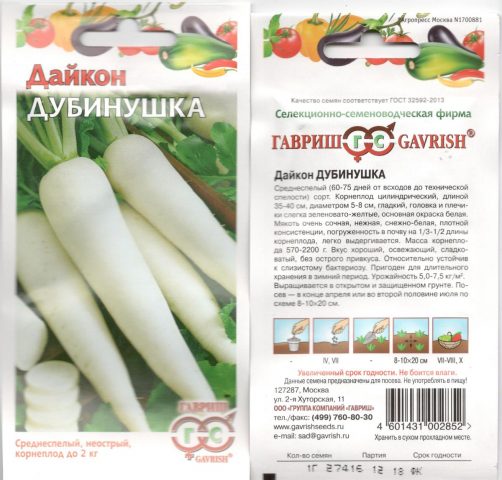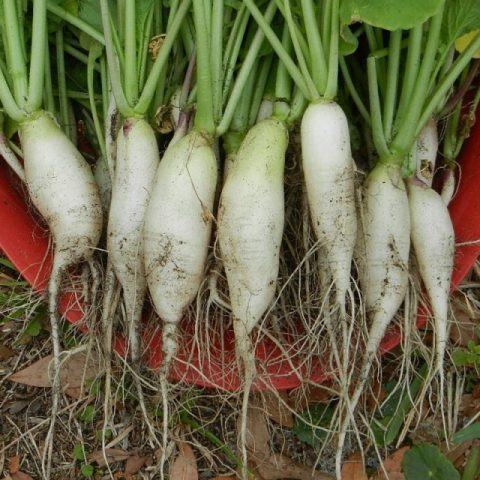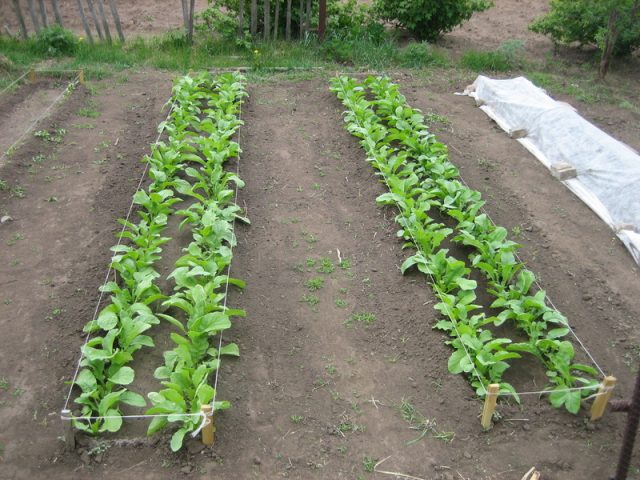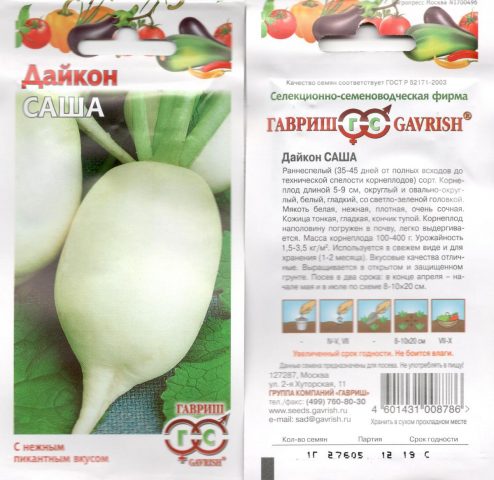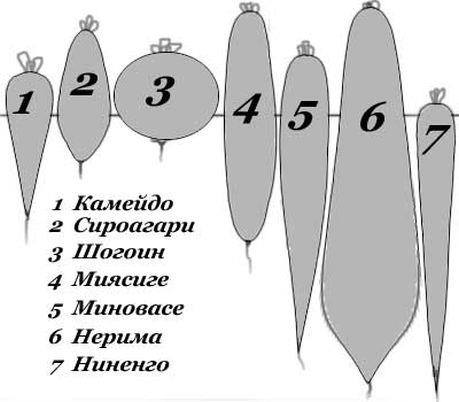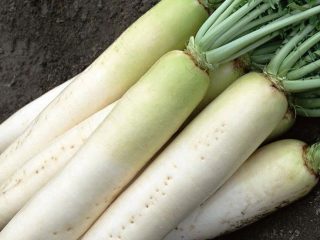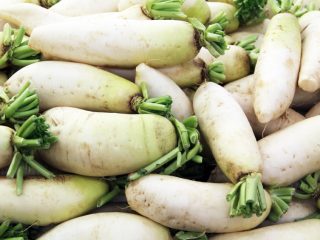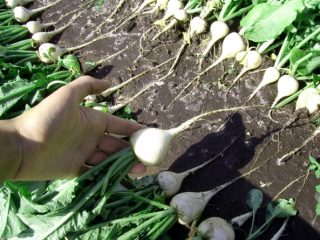Content
Planting and caring for a daikon, planting dates are the nuances that gardeners need to study before starting to grow a vegetable from Southeast Asia. Several domestic firms have been producing and selling seeds of this culture for a long time. Zoned varieties are planted by summer residents of different climatic zones. Daikon has many useful properties and is gradually finding its niche in home gardens.
When to plant a daikon
An unpretentious vegetable from the Cruciferous family does not require too much care, but still, agricultural technology in its successful planting and growing has its own subtleties. Know when to plant daikon seeds in the ground. Daikon is a culture of short daylight hours. Under sunlight for more than 12 hours, root crops are not formed, the plant creates flower stalks.
When to plant daikon in spring
As soon as the snow melts at the beginning of April and the soil becomes dry enough, in the middle climatic zone they start planting Japanese radish of zoned early varieties, which ripen in 35-40 days. An undemanding and cold-resistant plant germinates even at 3-5 ° C, and will fully mature by the time the days become longer. Seedlings are planted for seedlings from late March to April 10.
Daikon planting dates in July
In the southern part of the country, the summer planting of the daikon is the best, because in the spring the culture is usually arrowed. In the middle lane, summer crops of early daikon varieties are also practiced, which have time to ripen before frost. Seeds are planted in the south from late July to mid-August, in a temperate and harsh climate - in the first half of July, even in the last decade of June.
Is it possible to plant a daikon before winter
Frost-resistant seeds of this hardy culture usually sprout together in early spring after planting in winter. This method is favorable for areas of the south, where a short cool spring period quickly turns into hot days. Seeds are planted in late autumn, before frost. Experienced gardeners prepare the holes in advance, then place the grains in the already frozen ground, sprinkling them with the stored soil. A bucket of earth is enough, which is placed under a canopy, so that the soil does not get caught in the rain and does not freeze. The sown daikon is covered with mulch from peat, leaves, humus before winter. After the snow melts, the mulch is removed so that the sprouts develop freely.
When to plant a daikon in the Moscow region
Growing daikon outdoors in the Moscow region begins either in early spring, when the air warms up to + 5 ° C, or from mid-summer. Moreover, the last period is more preferable for harvesting a good harvest of tasty root crops for autumn and winter. When planting in spring, when daylight hours from April extend to 14 hours, there is a chance of getting unripe fruits. The sweet radish will have to be urgently pulled out so that mass flowering does not begin. When planting a daikon in the Moscow region in the spring, varieties resistant to shooting are selected, or the sowing of seeds is transferred to the summer.
In the middle lane, the daikon is planted no earlier than mid-June.As long as the seeds are sprouting, the longest days will wane and the culture will thrive. In Siberia and the Urals, where spring comes late, sweet radish should be planted only in summer, from the beginning of July, choosing early or mid-season zoned varieties.
Planting and caring for daikons outdoors
For their own needs, a useful crop is grown more often in vegetable gardens, and not in greenhouses. Planting of daikon radish is carried out according to the climatic zone in early spring or summer.
What are the ways to grow daikon
Daikon radish is planted in summer directly by seeds on a garden plot or seedlings are first grown. The sprouts are hardy and develop normally outdoors and at temperatures below + 10 ° C. In such conditions, the roots of early spring planting have time to ripen without throwing out the peduncles. Round-shaped varieties are often grown in seedlings for early harvest. Daikon with elongated root crops does not tolerate transplantation, therefore such varieties are planted directly on the site or in the greenhouse soil.
Selection of the right variety and seed preparation
The best known for planting in our conditions are daikon varieties of early ripening of the Minovashi group. Root crops are long, up to 40-50 cm, with a diameter of up to 8 cm. They are immersed in the soil by three quarters of their size. These varieties are best planted in loose sandy loam.
You can find the seeds of Japanese hybrids of the following groups:
- Miyashige, 30-50 cm long, half-way into the soil;
- Shogoin - rounded root crops with a diameter of 15 cm, growing on clay soils;
- Sirogari - early maturing cylindrical fruits up to 20-30 cm, going into the soil for two-thirds of the length;
- Kameida - short conical roots up to 15 cm, which are immersed in light soil by two-thirds of their size;
- Nineigo - in varieties resistant to flowering and frost, elongated fruits, up to 45-60 cm, with a diameter of 4-6 cm, grow completely in loose soil.
Gardeners prefer to plant daikon varieties of domestic producers - firms "Gavrish", "Aelita", "Seeds of Altai", which were bred taking into account local conditions:
- Moscow hero
- Fairy
- Favorite
Daikon varieties are zoned:
- Sasha - rounded, but uneven root crops of an early maturing variety, resistant to the development of arrows, the seeds of which are suitable for planting in the spring in vegetable gardens and greenhouses;
- Dragon, Club, Flamingo - cylindrical fruits planted in summer;
- Elephant fang - designed for landing in the southern regions of Russia.
Hybrids from the Japanese company "Sakata" also proved to be good for planting in the middle lane.
Any seeds are soaked for quick germination:
- Place the grains in a gauze bag for 30 minutes in hot water at a temperature of 48-49 ° C.
- Then place the seeds for planting for 1-2 minutes in cold water.
- The container is placed in the refrigerator for 20-24 hours.
How to grow daikon seedlings
When daikon seedlings are grown, the seeds are planted from mid-March to April 10th. For planting sweet radish, containers with a depth of 10-12 cm are suitable. The plant has long roots, which, within a month of development, will reach the bottom of the container. For the substrate, garden soil is prepared with part of the peat or peat tablets are used. Soaked seeds are planted 1-2 in pots, deepening by 1.5-2 cm. The substrate is watered and covered with a film, creating a comfortable atmosphere for seedlings. Sprouts show up in a week or less.
The soil is watered moderately, after the creation of 2 true leaves, a weak sprout is removed from the cell. At this time, the seedlings are fed with special complex fertilizers for root crops. After 15-18 days of development, daikon seedlings begin to harden, taking them out into the air, in the shade, at first for a short period. The last 2-3 days before planting, the seedlings are left outside and overnight.
Seedlings are transferred into holes at a temperature of 10 ° C. For successful cultivation and care of the daikon in the open field, they adhere to the correct spacing when planting: between rows 40-60 cm, between holes - 20-30 cm. Varieties with large roots and lush tops are provided with more space.
How to grow a daikon outdoors
The main thing in the technology of proper planting of sweet Japanese radish and its care is the selection of a sunny area with loose and light soil and neutral acidity. If the pH is below 6 units, the soil is deoxidized in advance, from the fall of the previous year, by adding lime or dolomite flour. Horse manure is also a good remedy for this purpose. For the plantings of the daikon themselves, no manure is used, feeding the soil a year in advance.
The seeds are placed in moistened grooves to a depth of 2 cm in summer, and during spring sowing - by 3 cm. The soil is trampled down, mulched with cut grass so that the summer sun does not quickly dry out the soil. A week later, there are already seedlings, they are watered in the evenings with warm water, and later they are thinned out. Remove regularly weeds and loosen the aisles. Spring seedlings are sheltered at night with the threat of frost. With the growth of root crops, they are periodically spud.
Fertilize planting daikon 2 times:
- when 2-4 pairs of leaves are created, the aisles are poured with a solution in a bucket of water 60 g of azofoska or other complex preparation;
- in the phase of formation of root crops, support with a mixture of 30 g of superphosphate and 40 g of potassium salt diluted in 10 liters of water.
Technology for growing daikon in a greenhouse
Indoors, Japanese radish is planted by gardeners in more severe climatic regions, in Siberia and the Urals. The best time to plant a daikon for a greenhouse is the end of March, and for an autumn harvest - the end of July, early August. After 3 weeks, the sprouts are transferred for some time every day to a permanent place to get used to the conditions of development. Experienced summer residents six months before planting enrich the land: they bring in a bucket of humus and 30 g of superphosphate per 1 sq. m. The radish, which is planted in summer, ripens until mid or late October. Gives up to 10 kg of harvest per square meter. Top dressing is the same as for open ground. It is often more convenient to use complex tools.
Planting daikon seeds before winter
In the southern regions, Japanese radish is planted in late autumn, often on frozen ground, where grooves were prepared in advance. This technique is also suitable for areas of the middle climatic zone. Only the timing of planting the daikon radish differs, the planting technology and care are the same. Seeds are placed 3 cm, sprinkled with soil, mulched with foliage, peat, hay with a layer of 4-5 cm. Shoots in spring are friendly, give an early harvest.
Daikon diseases and pests and the fight against them
Japanese radish is prone to fungal, bacterial and viral infections, in part due to improper care. It is necessary to plant plants not crowded, thin out in time, remove weeds, where pests develop that carry pathogens. With excessive watering, the culture may suffer from mucous bacteriosis, and in the seedling phase - from black leg. Biopreparations "Planriz", "Binoram" are effective. Instances with signs of a keel or mosaic are removed from the site by spilling an empty hole with potassium permanganate or fungicide.
Delicate daikon leaves are attractive to many pests: cruciferous fleas, cabbage flies, bedbugs, aphids and others. When seedlings appear, plants are treated with:
- powder or infusion of hot red pepper;
- a solution of 500 ml of vinegar in 10 liters of water;
- water the plants under the root with a solution of potassium permanganate to destroy the fly larvae;
- sprinkle the sprouts and the soil around them with wood ash, which protects them from insects and slugs.
The pepper infusion is prepared on the basis of 5 large pods, which are infused for 12-14 hours, and then diluted in a bucket of water and sprayed with the leaves.
What can be planted after daikon
As Japanese radish is not planted after other cruciferous plants - cabbage of any kind or radish, it is also not recommended to place these crops after daikon. Plants have the same diseases and pests that, after hibernation, will parasitize on new plantings. It is allowed to occupy the site with any other garden crops.
Is it possible to plant a daikon after a daikon
Secondary planting of sweet radish in the same place is strongly discouraged. Even in a small garden, crop rotation must be observed.
Conclusion
Planting and caring for a daikon, planting dates are important features for obtaining a bountiful harvest of useful root crops. Growing a culture is not difficult, but the subtleties on which the collection depends are important.

